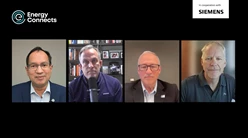Europe’s largest carbon capture project starts with first CO2 injection
A new era for carbon capture and storage (CCS) has begun. TotalEnergies, alongside partners Equinor and Shell, has officially inaugurated the Northern Lights project, the world’s first open-access CO₂ transportation and storage network, by injecting the first volumes of captured carbon dioxide beneath the seabed off western Norway.
The milestone was marked by the arrival of CO₂ from Heidelberg Materials’ cement plant in Brevik, Norway. After being shipped to the new terminal at Øygarden, the gas was transported through a 100-kilometer pipeline and injected more than 2,600 meters below the seabed. This marks the start of Phase 1 of the project, which enables the storage of up to 1.5 million tonnes of CO₂ per year—a capacity already fully booked by industrial clients across Europe.
Plans for expansion are already under way. In March 2025, the partners approved a second phase that will boost capacity to over 5 million tonnes annually by 2028. This will require major new infrastructure, including additional tanks, pumping systems, injection wells, and transport vessels.
Northern Lights has secured contracts with five major industrial players: Heidelberg Materials and Hafslund Celsio in Norway, Yara in the Netherlands, Ørsted in Denmark, and Stockholm Exergi in Sweden. For these companies, the project provides a critical pathway to slash emissions from hard-to-abate sectors such as cement, waste-to-energy, and chemicals.
For TotalEnergies, the launch is more than symbolic. Arnaud Le Foll, Senior Vice-President for New Business – Carbon Neutrality, said the successful injection “marks a new phase for the CCS industry in Europe.” Norway’s Longship initiative, which underpins Northern Lights with billions of dollars in state support, reflects the government’s belief that CCS must become a commercial industry if Europe is to meet its climate goals.
The first CO₂ shipment originated from Heidelberg’s innovative carbon capture facility at Brevik, the first of its kind at a cement plant anywhere in the world. Capable of capturing 400,000 tonnes per year, the system will enable the production of “evoZero” cement, marketed as a near-zero carbon material. Demand is already high, with the 2025 output pre-sold in advance.
Yet, challenges remain. Scaling up CCS will require sustained investment, supportive policy frameworks, and stronger carbon pricing to make low-carbon products competitive. Critics caution that without such measures, projects like Northern Lights could remain dependent on heavy public subsidies and struggle to replicate elsewhere.
Even so, the launch of Northern Lights marks a turning point. For the first time, captured industrial CO₂ is being shipped across borders and stored permanently at scale. If successful, the project could become a model for Europe,and the world, on how to cut emissions from industries that cannot easily switch to renewable energy.





